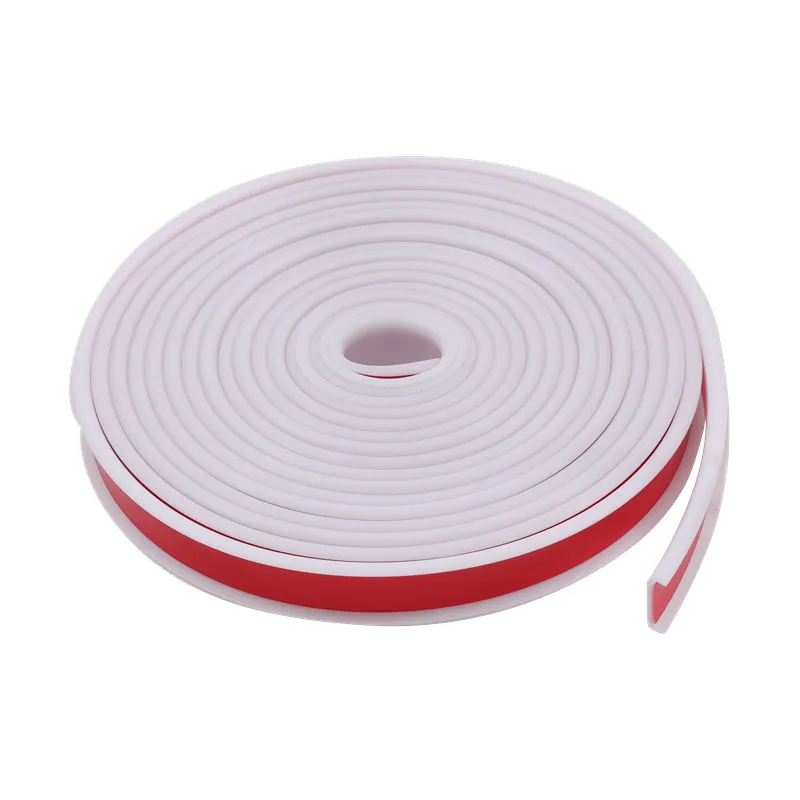seal rubber edge trim
Understanding Seal Rubber Edge Trim Benefits, Applications, and Installation
When it comes to ensuring a quality finish and a safe environment in various industries, seal rubber edge trim has emerged as an essential component. From automotive manufacturing to furniture production, this versatile product serves various purposes that enhance both functionality and aesthetics. In this article, we will explore what seal rubber edge trim is, discuss its benefits, examine its applications, and provide guidance on installation.
What is Seal Rubber Edge Trim?
Seal rubber edge trim is a type of protective edging made from durable rubber materials designed to cover sharp edges and prevent damage to both products and users. Often available in various shapes and sizes, it provides cushioning and insulation while enhancing the visual appeal of the surface. The flexibility and resilience of rubber make it an ideal material for edge protection, as it can conform to different designs and surfaces.
Benefits of Seal Rubber Edge Trim
1. Safety One of the primary reasons for using seal rubber edge trim is to enhance safety. Sharp or rough edges can pose serious injury risks, particularly in environments where people frequently interact with equipment or furniture. Installing rubber edge trim effectively reduces this risk by covering sharp edges and corners.
2. Aesthetic Appeal Beyond safety, seal rubber edge trim enhances the appearance of a product. Whether used in automotive parts or household furniture, a neat finish can create a polished look. Available in various colors and textures, it allows manufacturers to maintain brand consistency and meet design specifications.
3. Durability Made from high-quality rubber, seal edge trim is designed to withstand wear and tear. It exhibits excellent resistance to abrasion, UV exposure, and extreme temperatures, making it suitable for both indoor and outdoor applications. This durability ensures that users do not need to frequently replace or maintain trim, ultimately reducing long-term costs.
4. Noise and Vibration Dampening In addition to protection and aesthetic enhancement, seal rubber edge trim effectively dampens noise and vibration. This feature is especially valuable in automotive applications or machinery, where excessive noise can lead to a less pleasant user experience and potential mechanical issues over time.
5. Versatility Seal rubber edge trim is a highly versatile product, suitable for various applications, including automotive interiors, appliances, furniture, and industrial machinery. Its adaptability allows it to be used in numerous sectors, making it a popular choice among manufacturers.
Applications of Seal Rubber Edge Trim
Seal rubber edge trim can be found in a wide array of applications, showcasing its utility across different industries
- Automotive Industry Rubber edge trim is often installed around windows, door frames, and engine compartments to provide a finished look while serving vital functions like noise reduction and weather sealing.
seal rubber edge trim

- Furniture Manufacturing Edge trim is commonly used on desks, cabinets, and countertops to cover raw edges, enhance appearance, and increase longevity.
- Electronics Many electronic devices use rubber edge trim to protect sensitive internal components from dust, dirt, and physical damage.
- Construction In construction settings, rubber edge trim may be used on doors, glass panels, or countertops to improve safety by ensuring all edges are smoothly finished.
- Industrial Equipment Machinery often employs rubber edge trim to prevent injuries from sharp edges and protect against wear and tear from constant use.
Installation of Seal Rubber Edge Trim
Installing seal rubber edge trim is a straightforward process that requires minimal tools. Here’s a simple guide
1. Preparation Measure the edges where the trim will be installed. An accurate measurement ensures the correct length of rubber trim is cut to fit.
2. Cut the Trim Using a sharp utility knife or scissors, cut the rubber edge trim to the desired length, ensuring clean, straight cuts.
3. Clean the Surface Before applying the trim, clean the edge thoroughly to remove dust, grease, or old adhesives. This step ensures proper adhesion.
4. Apply the Trim Peel off any backing (if adhesive), and carefully press the trim onto the edge, making sure it aligns correctly. For non-adhesive trims, additional adhesive may be required.
5. Secure and Finish Press firmly along the entire length of the trim to ensure it adheres well. Allow it to set as per manufacturer instructions, and your edge should now be safely protected.
In conclusion, seal rubber edge trim is an invaluable addition to a wide range of applications, providing safety, aesthetic appeal, and durability. By understanding its benefits and installation processes, manufacturers can leverage this product to enhance their offerings and ensure a safer environment for users. Whether it’s a car, a piece of furniture, or industrial machinery, seal rubber edge trim proves to be a crucial element in the design and functionality of various products.
-
Under Door Draught Stopper: Essential ProtectionNewsJul.31,2025
-
Garage Door Seal and Weatherstrips for ProtectionNewsJul.31,2025
-
Edge Banding Tape for Perfect EdgesNewsJul.31,2025
-
Table Corner Guards and Wall Corner ProtectorsNewsJul.31,2025
-
Stair Nose Edging Trim and Tile Stair SolutionsNewsJul.31,2025
-
Truck Bed Rubber Mats for Pickup BedsNewsJul.31,2025
-
Window Weather Stripping for Noise ReductionNewsJul.29,2025